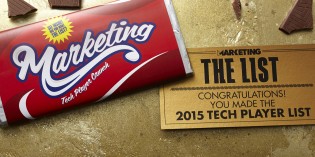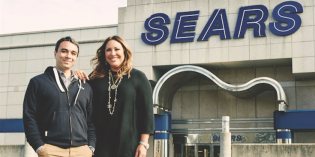AOL’s “digital prophet” to tout movements over moments at Branded Content Conference
 We’re entering a cleansing period as consumers when the quality of influence trumps quantity and a brand’s utility matters more than its ads. Shing has long sounded the alarm that we’re headed to a reality of showing, not telling, where if a brand is not contributing and adding value, it’s just being annoying. “Aim for movements, not moments,” he advises global clients. “We’re all paring back our information intake. It’s equivalent to moving into neighbourhoods and out of cities for the sake of our sanity.”
We’re entering a cleansing period as consumers when the quality of influence trumps quantity and a brand’s utility matters more than its ads. Shing has long sounded the alarm that we’re headed to a reality of showing, not telling, where if a brand is not contributing and adding value, it’s just being annoying. “Aim for movements, not moments,” he advises global clients. “We’re all paring back our information intake. It’s equivalent to moving into neighbourhoods and out of cities for the sake of our sanity.”
How can content connect in context and not contribute to clutter?
The key to success starts with a great idea. This foundation allows for the idea to travel across multiple properties with strong storytelling. The key to context is to ensure you are telling the right type of story at the right place at the right time. Too many brands tell the same story across different media and forget that people are using digital properties for different needs.
You’ve long said that generic advertising needs to evolve to “influence marketing,” adding that it’s not about size, but influence. What do you mean?
If we can move people beyond liking to actually share—or take other real actions—we can engage the crowd to create movements and not be limited to moments. For example, the concept of “like” is conceptually flawed because there is very little commitment to the action. I believe we can harness the power of “friends of a friend” to make the social experience—especially social-commerce—authentic.
Why are you big on the concept of attention as the new currency?
The average online rich media banner advertisement has a click-through rate of 0.02%. What happened to the other 99%? We should have never considered click-through rate as the most effective metric to measure digital. I believe attention is the new currency because of the increasing time we spend on pages, thanks to the rise of social and the increase of time spent on video across all screens.
How can brands optimize their content to ensure audience attention?
Brands power a point of view, inspiring people to engage, share and take action. Advanced storytelling has to be a focus for a brand to ensure it is delivering the right message, or story, at the right time—attention—to the right people, the target. Practically this means developing creative, engaging content that fuels conversations. This can be done with developing storytelling across all mediums—web properties and devices. Whether it is feature video, b-roll video for behind-the-scenes insider knowledge specifically for internet-connected TV, or timely brand reputation management across media sites, it all comes down to what is the brand’s engine of difference and how can that be expressed across mediums.
You’ve long argued that digital content should entertain, inform and provide utility. What’s an example of a brand or campaign that does this holy trinity
better than anyone?
Nike Fuelband is the first example that supports this theory. It is a physical experience to start off with, but connects with your mobile, engages you to strive for better results and entertains you within the community of other users of the band. It is also the best example of bridging digital and physical experiences.
You also cite the importance of harnessing pre-existing communities. Any great examples of this that you like?
A department store in Germany took approximately 70 professional photographs that told a love story but showcased the department store and loaded these into Flickr and featured it as an unbranded campaign. And Honda, within Pinterest, recently ran a competition asking people to curate what they would do with 24 hours offline, with the winner receiving $500 to put towards that time off. Also, Uni Qlo recently hacked Pinterest by registering hundreds of accounts and had people upload images on a set date at a set time. The result looks like a campaign.
David Shing is the keynote speaker at the upcoming Branded Content Conference on Sept. 12. Tickets are still available.
This article originally appeared in the Sept. 10 issue of Marketing.









